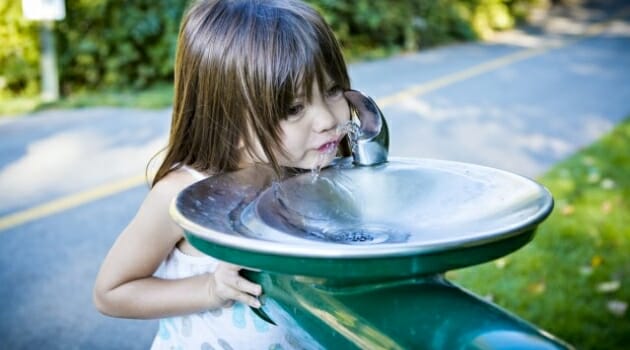Saving water is everyone’s responsibility. Let’s work together to use less.
It can be easy to forget that treated water is a precious and limited resource. Water demand is highest in the summer months when our risk of fire is high.
We need to work together to use water wisely and save it for drinking and fire protection.
Learn more about Whistler’s water conservation stages and restrictions, including neighbourhood watering schedules.

Drinking Whistler tap water
To reduce single-use plastic waste, everyone in Whistler is encouraged to choose flushed tap water over bottled water.
Whistler’s drinking water meets Vancouver Coastal Health’s safety standards. Drinking water across British Columbia ranks among the safest in the world.
Water quality is tested hundreds of times per year at over 40 sites in our water system.
Drinking water evaluations are posted by Vancouver Coastal Health, and Whistler’s Annual Drinking Water report is posted below.
The operation, maintenance and capital replacement of the system is funded by the Water Utility Fund.
Find a water bottle fill station
Plastic water bottles are single-use waste, meaning they are used once then discarded. These items may not be reused or recycled and end up in the landfill.
Remember to flush your taps
Like many other communities in Canada, the pH of some source water is naturally low.
Once water is delivered to homes and businesses, it is the responsibility of property owners to manage it. If water has not been used for a while, levels of dissolved metals may increase.
To reduce exposure to metals, Vancouver Coastal Health recommends freshening tap water by running it until cold.
Dissolved metals can come from:
- Faucets – fixtures inside your home may contain lead.
- Copper pipe with lead solder – before 1989, solder contained high lead levels.
Even though it is important to save water, remember to run taps until the water comes out cold before drinking. This makes sure the water you are drinking is the same quality as the water that is delivered to your home.
You can also install and maintain a water filter.
Water quality guidelines
As requested in the 2017 Vancouver Coastal Health (VCH) Inspection Report, the RMOW has been reviewing water stability and potential water conditioning with a thoughtful, evidence-based approach.
Testing your water
Should you wish to have your water tested independently, you can contact one of several labs in the lower mainland that can advise you on how these services can be provided such as:
- Caro Analytical Services
- Maxxam Analytics
- ALS Environmental
- Exova Canada
21 Mile Creek Source Water Protection Plan
The 21 Mile Creek Watershed provides up to 53 per cent of Whistler’s water supply. Protecting it is important to keep our water clean.
The Twenty-One Mile Creek Watershed: Source Water Protection Plan (PDF) is required by Vancouver Coastal Health.
The two largest risks to the water source are recreational activities and wildfires.
- Recreational activities: The plan allows recreation activities that ensure the risks to the water supply remain acceptable. Presently, the only recreational activities permitted are day hiking and back
- Wildfires: As a result of the Fort McMurray wildfires, the cost of providing clean drinking water has doubled. To reduce the risk of wildfire damage, the RMOW is continuing to invest in FireSmart fuel reduction measures.